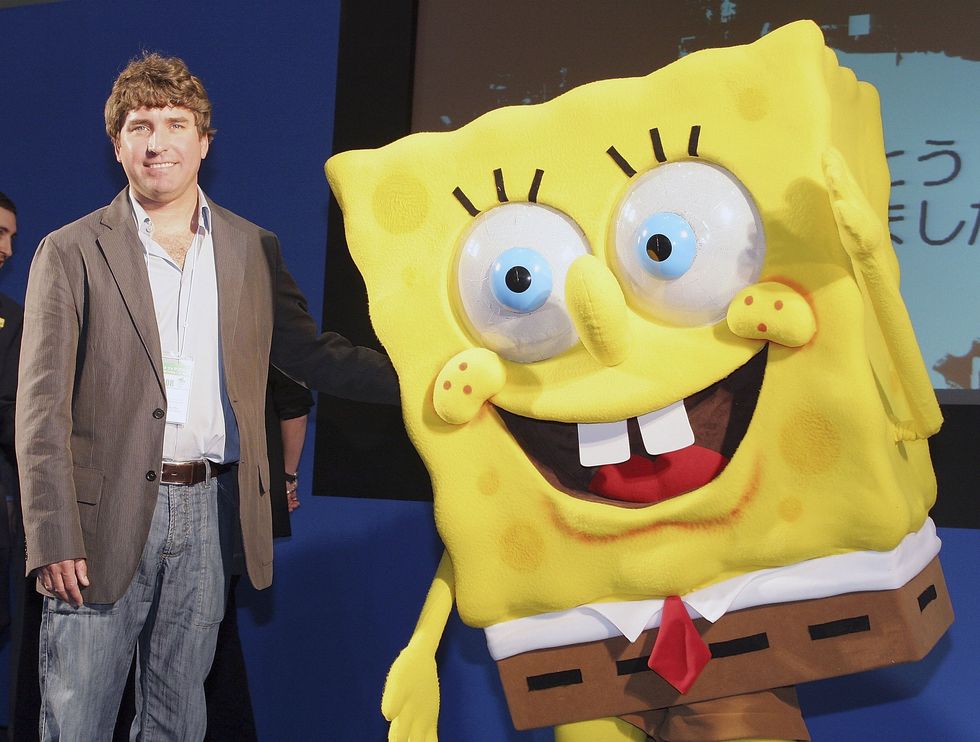You are viewing the article How Famous Comedians Inspired Stephen Hillenburg to Create SpongeBob SquarePants at Tnhelearning.edu.vn you can quickly access the necessary information in the table of contents of the article below.

Are you ready, kids? When first shaping SpongeBob SquarePants’ title character’s personality, creator Stephen Hillenburg soaked up the works of some pop culture icons. “I think it’s amusing to watch a naive, well-meaning character kind of undo more cynical characters — kind of like watching Laurel and Hardy or Charlie Chaplin,” Hillenburg told the Washington Post in 2001. “I think that’s why kids like the show — maybe even why adults like the show, adults who wish they were still kids.”
The animated series Hillenburg, who died in November 2018 at age 57 following an ALS battle, debuted in May 1999 and became Nickelodeon’s highest-rated and, with more than 200 episodes, one of its longest-running series as well. But what exactly went into crafting Bikini Bottom’s resident affable, Krabby Patty-flipping sponge who lives in a pineapple under the sea?
SpongeBob was based on other famous comedians
When working on his pitch for SpongeBob with Hillenburg in 1996, creative director Derek Drymon recalls his former co-worker from another Nickelodeon class (Rocko’s Modern Life) wanting to develop a character “who had a very young, boyish attitude.” Their research, added Drymon, involved sitting on Hillenburg’s bed watching videos of Pee-Wee-Herman, Buster Keaton, Stan Laurel, and Jerry Lewis, whose 1960 comedy The Bellboy was particularly inspiring.
“Steve talked all through it, pointing out things he liked about the character Jerry was playing,” Drymon shared “The scene that was most SpongeBob in hindsight was the one where Jerry’s boss gives him the job of putting out hundreds of folding chairs in a giant auditorium. It looks like it will take hours. The boss steps out for a minute, and when he walks back in, Jerry had magically filled the place with chairs.”
Also on their watchlist: “Towed in a Hole,” a 1932 short “where [Laurel] is annoying [Hardy] and gets put in a little room as a punishment,” continued Drymon. “Steve loved how Stan entertained himself by drawing on the wall and playing tic-tac-toe all alone — he was like a kid being put in the corner. Steve really wanted to capture that innocent, kid-like humor.”
Hillenburg originally named the character ‘SpongeBoy’
Before they got to that point, however, Hillenburg — a trained marine biologist — first had to dream up the series’ “somewhat nerdy, squeaky clean oddball” protagonist. While teaching marine biology at the Orange County Marine Institute in 1989, the animator created a comic book called Intertidal Zone for the education center. His illustrated work featured a character named Bob, who was, yes, a talking (albeit amorphous-shaped) sponge.
As a marine science teacher and self-described “ocean freak,” Hillenburg has said he first drew natural sponges for the series, but after sketching a square household sponge, “it looked so funny” that he knew his star had been born. He first named his “absorbent and yellow and porous” creation “SpongeBoy,” but due to copyright issues with a mop company, he swapped a letter and settled on SpongeBob. He reportedly deemed it important to keep “sponge” in the moniker, out of fear that kids may mistake SpongeBob for a block of cheese.
He did, however, see some correlations between SpongeBob and a natural sponge. “I think the realest connection is that sponges are odd and we think of them as odd,” Hillenburg added to the Washington Post. “I think the connection to SpongeBob is that sponges are the most elastic, changing, plastic creatures… and I wanted him to be able to do things that were really magical.”
Hillenburg continued: “He has these really creative moments when he can re-form himself. But most sponges in the ocean are sedentary: They attach themselves to a rock and sit and filter-feed the rest of their lives, and reproduce, and that’s about it. Not that they are not interesting, but they are not that kinetic. They are not mobile. They don’t cook Krabbie Patties!”
In the end, however, the cartoon’s for-all-ages comedy interwoven with positive lessons is the bedrock of Spongebob Squarepants‘ enduring legacy. As Hillenburg, who drew upon personal experiences as a child for storylines, himself summed up: “First of all, we want the show to be really funny. But I think in the end the message is: Treat people the way you expect to be treated.”
Thank you for reading this post How Famous Comedians Inspired Stephen Hillenburg to Create SpongeBob SquarePants at Tnhelearning.edu.vn You can comment, see more related articles below and hope to help you with interesting information.
Related Search:




